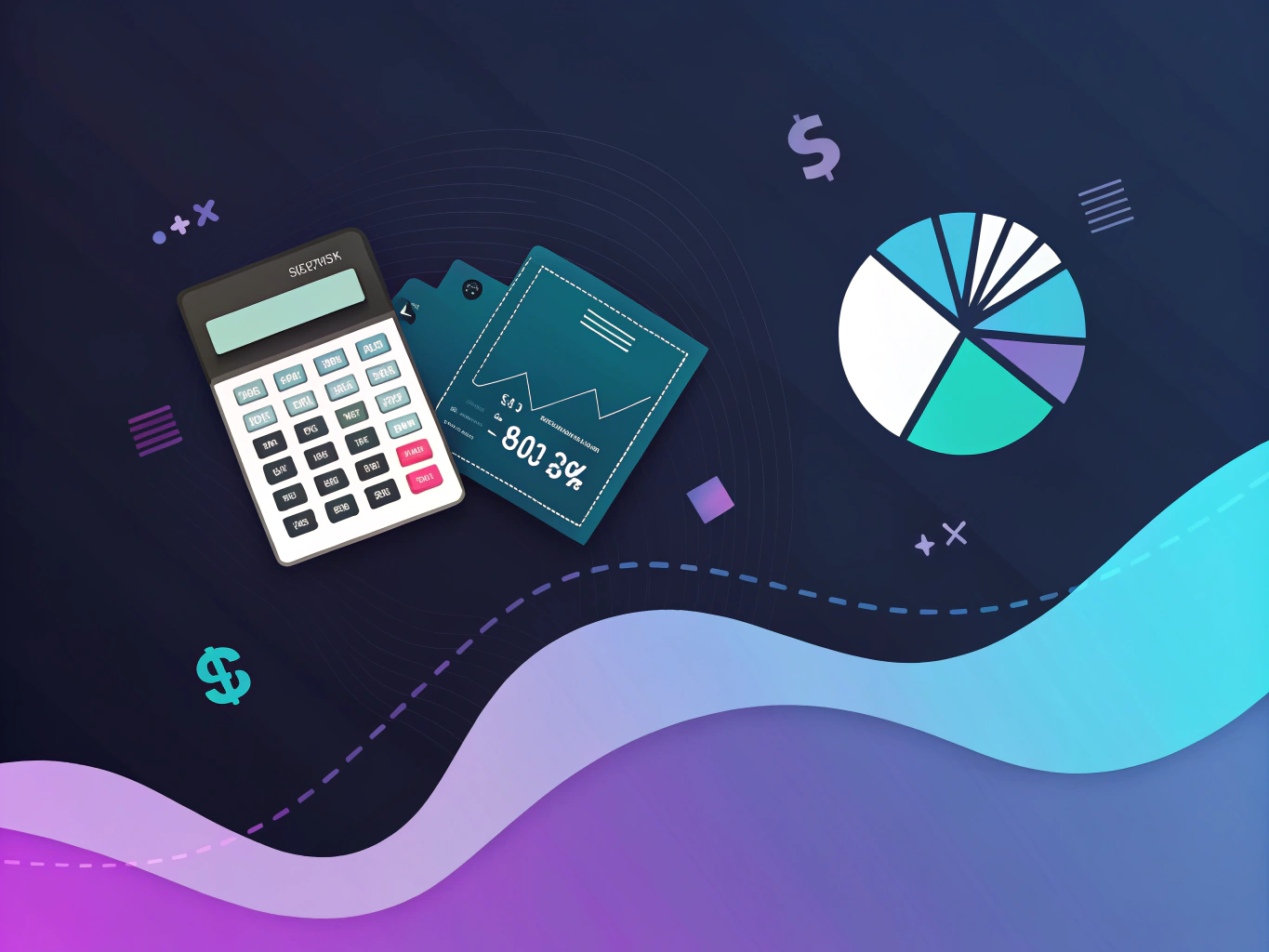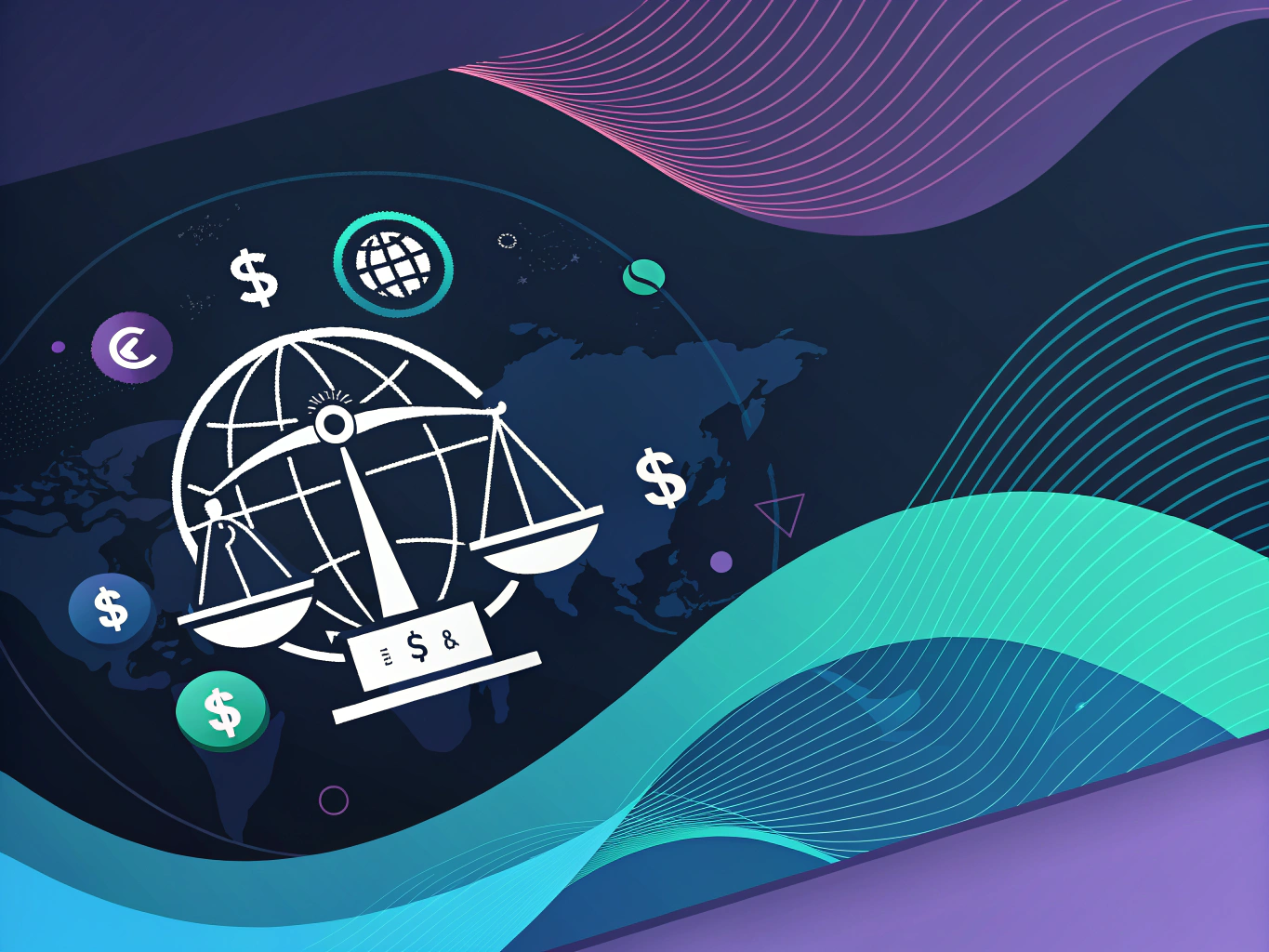Understanding Amazon Seller Fees in 2025: The Real Cost of Success
Let’s talk about the elephant in the room that every Amazon seller dreads discussing: fees. They’re like that friend who always orders the most expensive item on the menu and then suggests splitting the bill equally. You know they’re part of the deal, but sometimes they just feel…excessive.

I’ve spent years helping brands navigate the complex world of ecommerce, and if there’s one thing that consistently makes sellers scratch their heads (or pull their hair out), it’s understanding Amazon’s fee structure. It’s not just about knowing the numbers—it’s about understanding how these fees impact your business strategy and bottom line.
Here’s the thing: Amazon digital marketplace is like a bustling city. You can’t expect to set up shop in Times Square without paying premium rent. But unlike traditional retail, where you might negotiate a fixed lease, Amazon’s fees are more like a dynamic ecosystem that shifts and evolves with your business. To understand more, check out our guide on Amazon referral fees.
The Basic Amazon Seller Fee Structure: Breaking Down the Basics

Before we dive into the nitty-gritty, let’s get something straight: there’s no such thing as selling on Amazon for free. Even if you find ways to minimize costs, you’re always going to be sharing a piece of the pie with Jeff Bezos. The question is: how big a slice are we talking about?
Individual vs. Professional Selling Plans
Think of this as choosing between a pay-as-you-go phone plan and a monthly subscription. The Individual plan charges $0.99 per item sold (plus referral fees), while the Professional plan costs $39.99 monthly, regardless of how many items you sell. Simple math, right? Not quite. For more insights on digital products, see what is Amazon digital.
If you’re selling more than 40 items monthly, the Professional plan is your friend. But it’s not just about the numbers—Professional sellers get access to advanced selling tools, bulk listing capabilities, and the ability to compete for the Buy Box. It’s like upgrading from coach to business class; sure, you get to your destination either way, but the experience (and opportunities) are vastly different.
Referral Fees: The Commission Amazon Takes
Here’s where things get interesting. Amazon’s referral fees typically range from 8% to 45% of your item’s selling price, depending on the category. Most categories hover around 15%, but there are enough exceptions to make your head spin. Electronics might be at 8%, while jewelry can hit 20% or higher.
Let’s break down a real example: Say you’re selling a $100 product in the Home & Kitchen category with a 15% referral fee. Amazon takes $15 right off the top. That’s before we even talk about FBA fees, storage costs, or any promotional expenses. And if you’re wondering “how much does Amazon take from sellers?” – well, we’re just getting started. Learn more about using Amazon’s FBA calculator to estimate your fees.
FBA Fees: The Price of Amazon’s Fulfillment Magic
Fulfillment by Amazon (FBA) is like having a personal butler for your products. They store, pack, ship, and handle customer service. Convenient? Absolutely. Free? Not even close.
Understanding the FBA Fee Structure
FBA fees are calculated based on two main factors: size/weight and storage duration. In 2025, we’re seeing some significant changes to these fees that every seller needs to understand. The base fulfillment fee for a standard-size item under 1 pound now starts at $3.22—and that’s just the beginning. Consider how to resell on Amazon effectively to manage these fees.
Let’s put this in perspective: For that same $100 Home & Kitchen item we mentioned earlier, if it’s a standard-size product weighing 1 pound, you’re looking at:
- Referral Fee: $15.00 (15%)
- FBA Fulfillment Fee: $3.22
- Monthly Storage: ~$0.75 (varies by season)
- Total Amazon Fees: $18.97
And that’s assuming everything goes perfectly—no returns, no long-term storage fees, no advertising costs. The reality? Your actual amazon marketplace charges often end up being higher. For reimbursement tips, see Amazon reimbursement claim.
Storage Fees: The Silent Profit Killer
Storage fees are like that gym membership you forgot about—small monthly charges that add up quickly. Amazon charges monthly storage fees based on the daily average volume your inventory occupies in their fulfillment centers. During non-peak months (January-September), you’re looking at $0.87 per cubic foot for standard-size items. But during peak season (October-December)? That jumps to $2.40 per cubic foot. Learn more about the difference between FBM vs. FBA.
Amazon FBA Fees Explained: The Real Cost of Selling Through Amazon’s Fulfillment Network
Let’s talk about the elephant in the room – Amazon FBA fees. They’re like that subscription service you signed up for and forgot about, quietly eating away at your profits while you weren’t looking. But unlike that dusty Peloton in your garage, these fees are unavoidable if you want to play in Amazon’s sandbox.
I’ve spent years analyzing amazon seller fees and watching them evolve (usually upward). The truth? They’re complex by design. Amazon’s fee structure is like a Russian nesting doll – there’s always another layer to uncover.
Breaking Down the Core FBA Fee Components
First things first – fulfillment fees. These are what you pay Amazon to pick, pack, and ship your products. Think of them as your virtual warehouse workers’ salaries. In 2025, they’ve actually gotten more competitive for low-priced items (under $10), dropping by about $0.77 per unit. But don’t celebrate just yet – if you were using the now-defunct Small and Light program, you might be paying around $0.30 more per item. If you’re starting out, learn how to become an Amazon reseller.
Storage Fees: The Silent Profit Killer
Storage fees are where things get interesting – and by interesting, I mean potentially expensive. Amazon charges you monthly for every cubic foot your products occupy in their warehouses. It’s like paying rent, but your tenants are your own products. During peak season (October through December), these fees can double. Why? Because Amazon’s playing Tetris with their warehouse space, and during the holiday rush, that space becomes premium real estate. Consider learning how selling on eBay works as an alternative.
The Hidden Costs That Can Break Your Amazon Business

Remember that scene in Jurassic Park where they discover the velociraptors have been breeding? Hidden Amazon marketplace charges can multiply just as unexpectedly. Let’s break down these sneaky fees that don’t make the headlines:
- Stranded inventory fees (when your products get stuck in limbo)
- Disposal and removal fees (because sometimes products need to go)
- Return processing fees (the cost of customer satisfaction)
- Prep service fees (when your products need a makeover before selling)
The Real Math Behind Amazon Marketplace Payments
Let’s get real about how much amazon takes from sellers. On a $100 sale, you’re typically looking at:
- Referral fee: $15 (15% average)
- FBA fulfillment: $5-12 (depending on size/weight)
- Storage: $0.50-2 (varies by season)
- Hidden costs: $2-5 (returns, prep, etc.)
That means Amazon could take anywhere from $22.50 to $34 from your $100 sale – and we haven’t even talked about advertising costs yet. For more on courses, check the best Amazon FBA course.
Optimizing Your Amazon Seller Fees: Working Smarter, Not Harder
Can you sell on Amazon without drowning in fees? Yes, but it requires strategy. Here’s what smart sellers are doing:
Inventory Management That Actually Works
Think of your inventory like a game of hot potato – you want to hold it just long enough to make a profit, but not so long that storage fees eat you alive. I’ve seen sellers increase their profitability by 15-20% just by optimizing their inventory turnover. Learn how to list products on Amazon effectively.
Strategic Product Selection
The key to how to sell a product on amazon profitably isn’t just finding hot items – it’s finding items with the right fee-to-profit ratio. Look for products that are:
- Small and light (lower fulfillment fees)
- High margin (to absorb the referral fees)
- Fast-moving (minimal storage fees)
- Durable (fewer returns and damages)
The Price is Right (Or Is It?)
Here’s something most guides won’t tell you: sometimes raising your prices can actually increase your profits, even if it means selling fewer units. Why? Because amazon marketplace charges often hit harder on lower-priced items as a percentage of revenue. Wondering what you can sell? Check what can I sell on Amazon as a new seller.
Can you make $1000 a month on Amazon? Absolutely. But it requires understanding these fees like they’re your business partner – because, in many ways, they are. The sellers who succeed aren’t just selling products; they’re mastering the art of fee management. Consider if you need a business license to sell on Amazon.
And no, you can’t sell on Amazon without fees – at least not if you want to build a sustainable business. But you can get smarter about how you handle them.
Advanced Fee Management Strategies for Amazon Sellers
Let’s get real about something that keeps many Amazon sellers up at night – managing those ever-climbing fees. I’ve seen countless sellers throw in the towel because they couldn’t crack the fee management code. But here’s the thing: those amazon seller fees don’t have to be your business’s kryptonite.
Financial Planning That Actually Works
Think of your Amazon business like a sci-fi spaceship – you need to monitor all those gauges and metrics constantly. The most successful sellers I’ve worked with treat their fee tracking like a mission-critical system. They’re not just passively watching their amazon marketplace charges eat into their profits; they’re actively managing them. Explore our Amazon listing optimization tool for better insights.
Here’s what your fee management dashboard should look like:
– Daily profit/loss tracking with fee breakdowns
– Weekly cash flow projections accounting for upcoming fees
– Monthly fee trend analysis
– Quarterly fee-to-revenue ratio assessments
The Future of Amazon Seller Fees: What’s Coming in 2025
Based on historical patterns and insider insights, we’re likely to see some interesting shifts in how much does amazon take from sellers. The platform’s been experimenting with AI-driven dynamic fee structures, and I wouldn’t be surprised if we see more personalized fee models based on seller performance metrics. For AI tools, explore AI photoshoot tools comparisons.
Remember when everyone panicked about the FBA fee increases last year? Yet the sellers who adapted quickly actually found ways to optimize their operations and maintain their margins. That’s the kind of agility you need in this space.
International Selling: The Fee Frontier

If you’re wondering how to sell on amazon across borders without getting crushed by fees, you’re not alone. The international marketplace is like a whole different game with its own rulebook of amazon marketplace payments and charges.
Here’s what most sellers get wrong about international fees: they focus solely on the obvious costs while ignoring the hidden ones. Currency exchange rates, cross-border return handling, and international storage fees can turn a seemingly profitable product into a money pit if you’re not careful.
Category-Specific Strategies That Actually Move the Needle
Want to know how to sell a product on amazon profitably? It starts with picking the right category. Some categories might look attractive with their lower referral fees, but when you factor in the competition and return rates, the math might tell a different story. For keyword insights, check how to find ecommerce trending keywords.
I’ve seen sellers absolutely crush it in categories others avoid because they understood the total cost picture. The amazon referral fee is just one piece of the puzzle – you need to consider:
– Category-specific return rates
– Seasonal storage cost variations
– Competition levels and advertising costs
– Customer service requirements
Real Success Stories: Beyond the Theory
Let me share something fascinating: one of our clients managed to sell on amazon for free (well, almost) by masterfully stacking various fee exemptions and promotional credits. While that’s not sustainable long-term, it shows how creative you can get with fee management.
Another seller in our network turned their high amazon marketplace charge into an advantage by building it into their brand story – positioning their products as premium offerings that justified higher prices. They actually saw their conversion rates improve after raising prices to account for increased fees.
Expert Tips That Actually Work
After analyzing thousands of seller accounts and their fee structures, here are the strategies that consistently deliver results:
- Bundle strategically to spread fixed fees across multiple items
- Time your inventory shipments to minimize storage fees
- Use Amazon’s fee calculator religiously before launching new products
- Maintain a healthy feedback rate to reduce return-related fees
Your Action Plan for 2025
Look, the reality is that amazon seller fees aren’t going away. But that doesn’t mean they have to control your business’s destiny. Start with these immediate actions:
1. Audit your current fee structure across all SKUs
2. Identify your three highest fee-impact products
3. Calculate your true profit margins after ALL fees
4. Set up automated fee tracking and alerts
5. Create a quarterly fee optimization schedule
Long-term Success Framework
The sellers who thrive on Amazon in 2025 and beyond will be those who treat fee management as a core business function, not an afterthought. Think of it like training an AI model – you need constant monitoring, adjustment, and optimization.
Remember: the goal isn’t to eliminate fees (that’s about as likely as finding a bug-free software launch), but to optimize them to a point where they’re a predictable, manageable part of your business model. To enhance your images, learn how to add text to a photo.
And here’s my final thought: while everyone else is complaining about amazon marketplace charges, use this knowledge to build a more resilient, profitable business. Because in the end, it’s not about how much Amazon takes – it’s about how much you keep.
👉👉 Create Photos, Videos & Optimized Content in minutes 👈👈
Related Articles:
- Amazon Referral Fees: A Complete Guide for Sellers 2024
- What is Amazon Digital Charge and How Can You Manage It?
- Optimize Pricing with Amazon’s FBA Calculator | ProductScope AI
Frequently Asked Questions
How much are Amazon seller fees?
Amazon seller fees vary depending on the type of account you choose and the category of the products you sell. Individual sellers pay $0.99 per item sold, while Professional sellers pay a monthly subscription fee of $39.99. Additionally, both account types incur a referral fee, which is a percentage of the total price and varies by category, typically ranging from 6% to 45%.
What percentage do Amazon take from sellers?
Amazon takes a referral fee as a percentage of each sale, which varies by product category. This percentage typically ranges from 6% to 15% for most categories, but it can be higher for certain items. Sellers should check Amazon’s fee schedule to understand the specific percentage for their products.
How much does Amazon take from a $100 sale?
The amount Amazon takes from a $100 sale depends on the product category. Generally, Amazon’s referral fee is between 6% and 15%, so for a $100 sale, Amazon would take between $6 and $15. In addition to the referral fee, sellers might also incur other charges like closing fees or fulfillment fees if they use Fulfilled by Amazon (FBA).
Can I make $1000 a month on Amazon?
Yes, it is possible to make $1000 a month on Amazon, but it requires strategic planning, effective product selection, and marketing. Success depends on factors like product demand, competition, pricing strategy, and your ability to manage and scale your operations efficiently. Many sellers achieve this milestone, but it often involves dedication and continuous optimization.
Can I sell on Amazon without a fee?
It is not possible to sell on Amazon completely without fees. Even individual sellers, who do not pay a monthly subscription, incur a $0.99 fee per item sold, along with referral fees that are a percentage of the sale price. Although there are unavoidable fees, sellers can minimize costs by carefully selecting their selling plan and managing their inventory and operations efficiently.
About the Author
Vijay Jacob is the founder and chief contributing writer for ProductScope AI focused on storytelling in AI and tech. You can follow him on X and LinkedIn, and ProductScope AI on X and on LinkedIn.
We’re also building a powerful AI Studio for Brands & Creators to sell smarter and faster with AI. With PS Studio you can generate AI Images, AI Videos, Chat and Automate repeat writing with AI Agents that can produce content in your voice and tone all in one place. If you sell on Amazon you can even optimize your Amazon Product Listings or get unique customer insights with PS Optimize.
🎁 Limited time Bonus: I put together an exclusive welcome gift called the “Formula,” which includes all of my free checklists (from SEO to Image Design to content creation at scale), including the top AI agents, and ways to scale your brand & content strategy today. Sign up free to get 200 PS Studio credits on us, and as a bonus, you will receive the “formula” via email as a thank you for your time.
